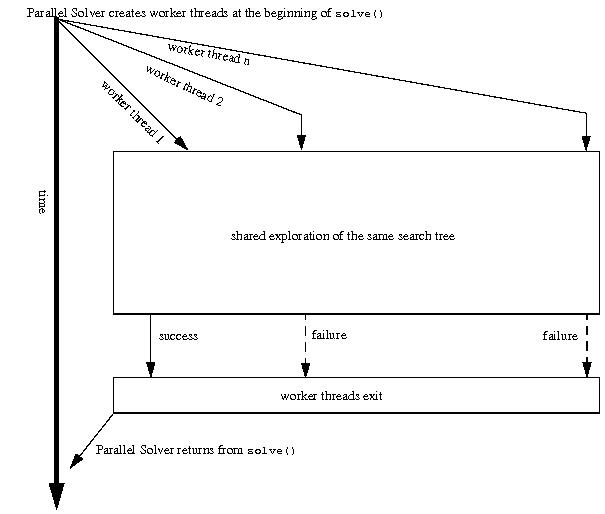Understanding the architecture
 PREVIOUS
NEXT
PREVIOUS
NEXT
| IBM ILOG Solver User's Manual > More on Solving > Using Parallel Solver: Multithreaded Warehouse Location > Understanding the architecture |
Understanding the architecture |
INDEX
 PREVIOUS
NEXT
PREVIOUS
NEXT
|
Conventional Solver applications run sequentially within a single process. In contrast, an application built with Parallel Solver typically runs in multiple threads in order to take advantage of parallel processing during the exploration of the search tree. For that reason, the architecture of an application of Parallel Solver differs slightly from the architecture of a conventional single-threaded Solver application.
Parallel Solver differs most markedly from conventional Solver with respect to its parallel search. In a Parallel Solver application, there are multiple instances of the search engine. The instances are known as workers; they run in different threads yet explore the same search tree. They communicate with each other across a virtual communication layer.
That virtual communication layer fulfills several major tasks:
The following figure shows you a time line where a main thread in a Parallel Solver application first creates its multiple worker threads. It then sleeps while those workers share a search tree where they explore possible solutions. Once a worker finds a solution, all workers exit, and the main thread awakes to continue execution.

| © Copyright IBM Corp. 1987, 2009. Legal terms. | PREVIOUS NEXT |